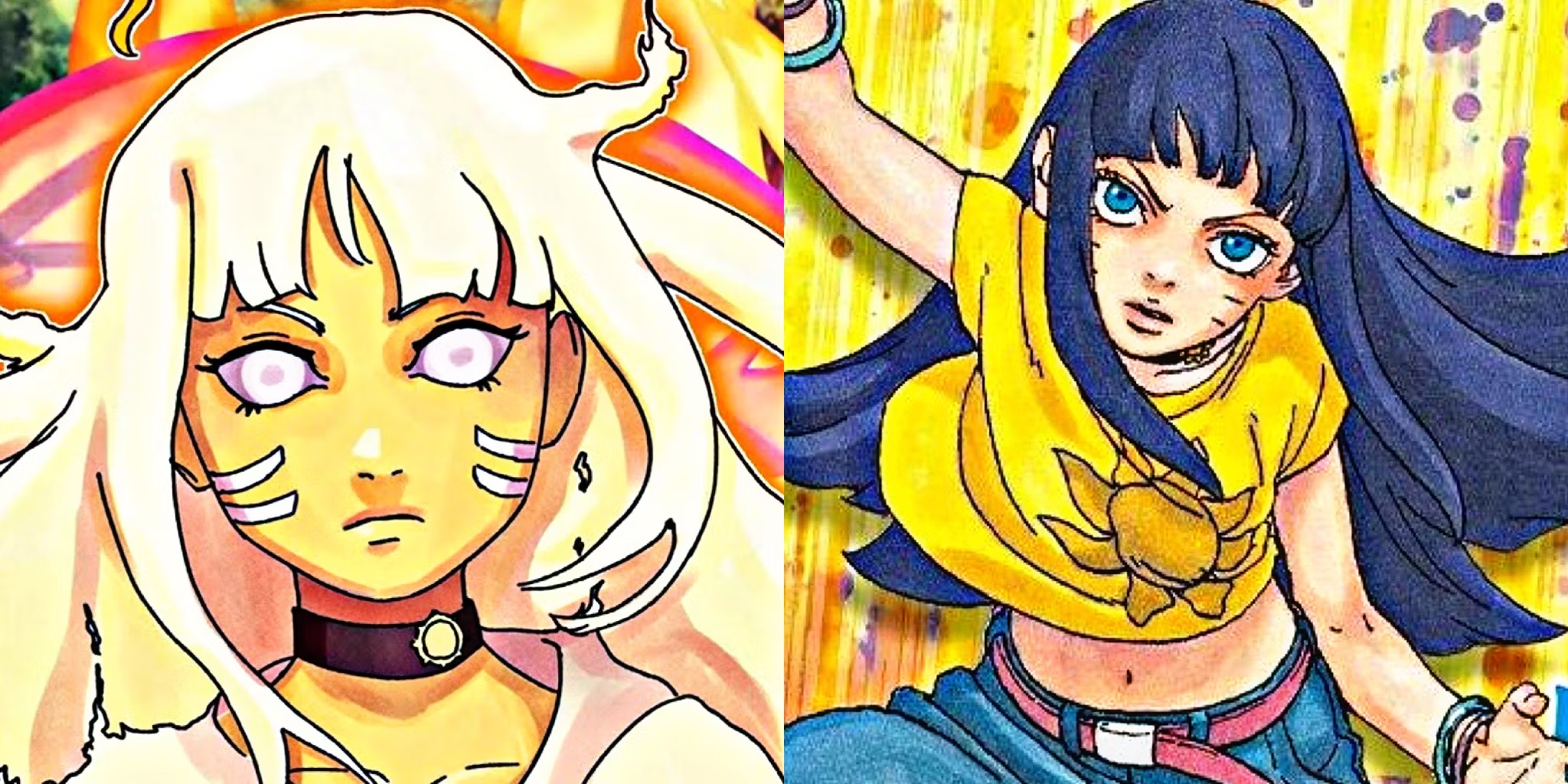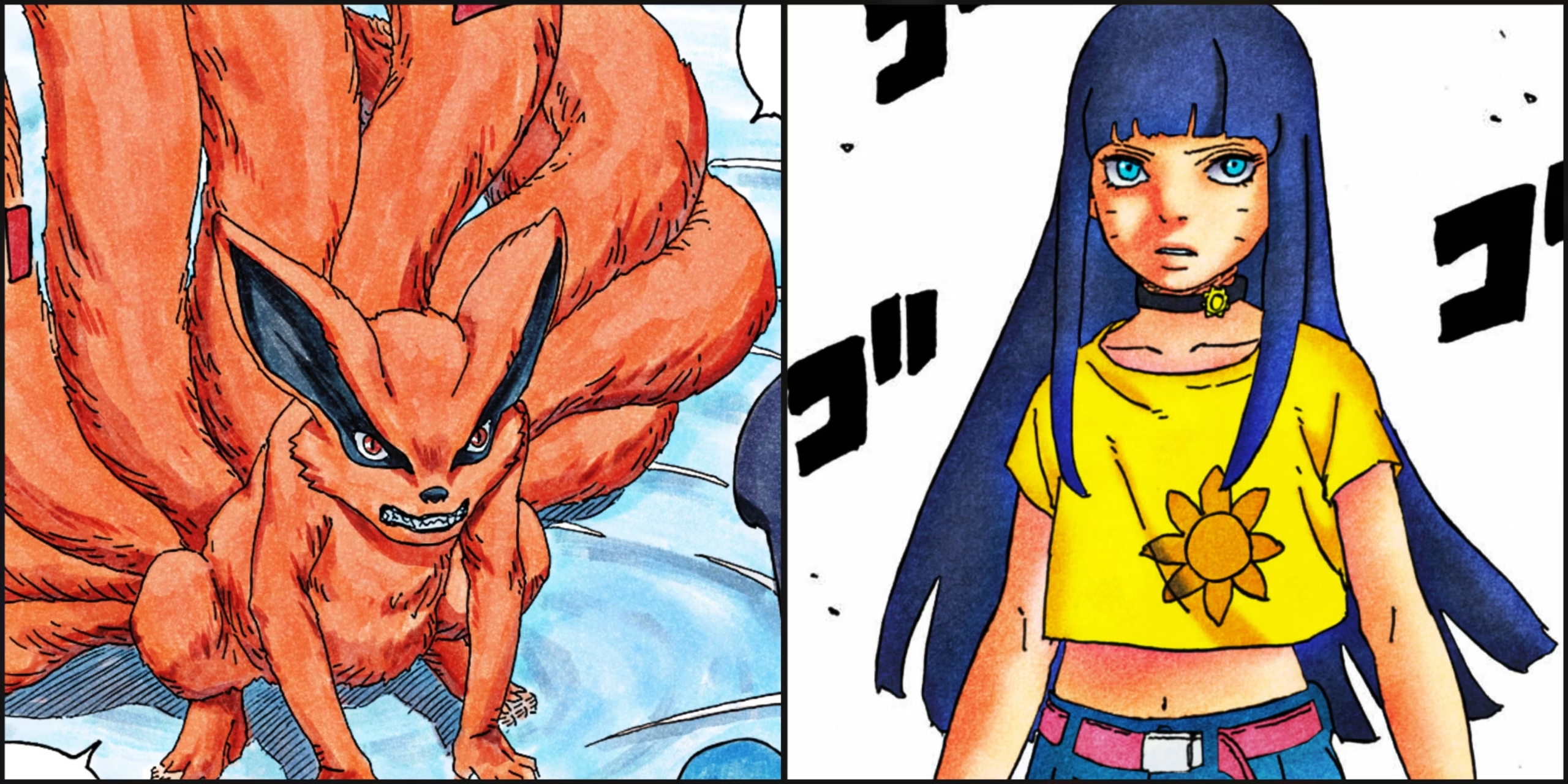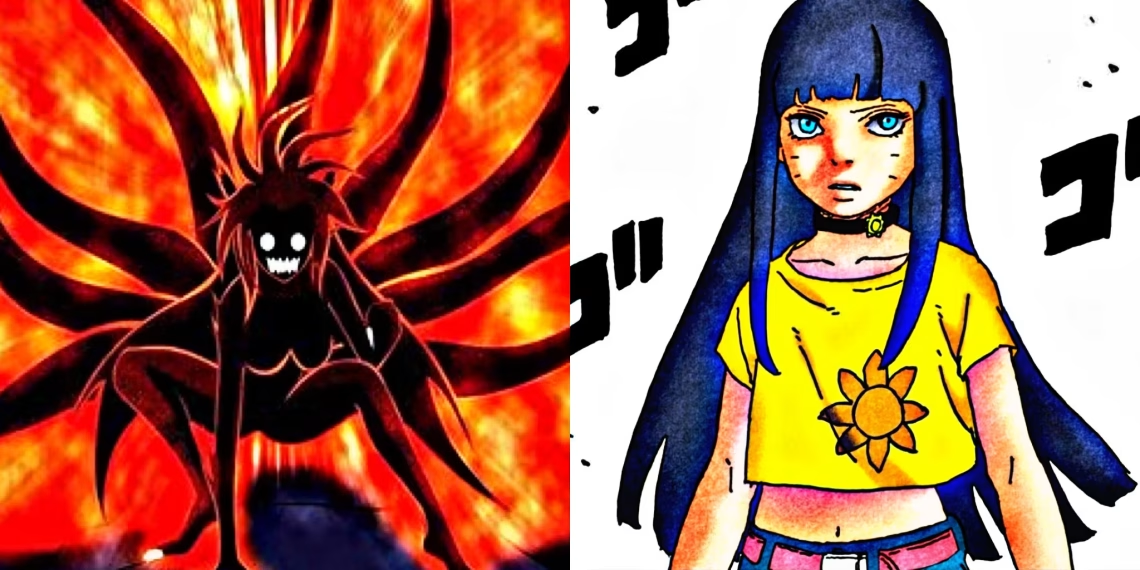In Naruto, where legends are born and legacies forged, a seismic shift has shaken the very foundations of our understanding. Enter Boruto: Two Blue Vortex, the herald of a new era in the Naruto Saga, where the familiar contours of power are being redrawn with each turn of the page.
At the heart of this narrative upheaval lies a revelation that has sent shockwaves through the fandom, forever altering our perception of what it means to wield the awesome might of a Tailed Beast. In a twist that defies expectations, Naruto’s beloved daughter, Himawari, emerges as the vessel for Kurama, the Nine-Tailed Fox.
Himawari Uzumaki, the Unprecedented Jinchuriki Phenomenon

But this is no ordinary passing of the torch; it is a fusion of souls, a melding of destinies that transcends the boundaries of tradition and expectation. Himawari, imbued with the essence of Kurama from the moment of her conception, now stands as a beacon of untold potential, a convergence of human and beast unlike anything the shinobi world has witnessed before.
As Kurama himself reveals, Himawari is not merely a host to his formidable power; she is a symbiotic entity, a hybrid being whose very essence is intertwined with that of the Nine-Tails. This profound connection heralds a new era of possibilities, where the dynamics of power are redefined, and the boundaries of potential are pushed ever further.
In the crucible of battle, Himawari’s true strength will be tested, her metamorphosis into a being of unparalleled prowess set against the backdrop of a world in flux. But it is not merely her raw power that sets her apart; it is the journey of self-discovery that lies before her, the emotional and psychological odyssey of a young girl coming to terms with the monstrous legacy she bears.

Gone are the days of simple dichotomies, of black and white, good and evil. In Boruto: Two Blue Vortex, shades of gray abound, as the very nature of heroism is called into question. Himawari’s ascent to greatness is not just a tale of triumph over adversity; it is a narrative of identity, of agency, of carving out one’s own path in a world fraught with uncertainty.
And yet, amidst the chaos and upheaval, there is a sense of exhilaration, of anticipation for the wonders yet to come. For as Himawari delves deeper into the wellspring of her power, unlocking new abilities, new forms, she does so not as a mere vessel, but as a pioneer forging a path into uncharted territory.
For fans of the Naruto Saga, this reimagining of Kurama’s legacy is a revelation, a tantalizing sneak peek into the boundless possibilities of storytelling. From the depths of despair, a new hope emerges, embodied in the figure of a young girl destined for greatness.

In the annals of shinobi history, Himawari Uzumaki will be remembered not only as a Jinchuriki of unparalleled power but as a symbol of resilience, of courage in the face of adversity. Hers is a journey that transcends the pages of a manga, resonating with readers far beyond the confines of the printed page.
As Boruto: Two Blue Vortex continues to entertain audiences around the world, one thing is abundantly clear: the legacy of Naruto lives on, not merely in the annals of history, but in the hearts and minds of those who dare to dream of a world where anything is possible.
The revelation of Himawari as a Nine-Tails Jinchuriki in “Boruto: Two Blue Vortex” is a bold narrative twist, redefining the power dynamics of the Naruto universe. It promises an intriguing exploration of identity, growth, and the interplay between human and beast within the shinobi world.





